Dirt bikes are motorcycles specially designed for off-road terrain. They are typically lighter and slimmer than traditional motorcycles and have other features that make them perfect for rugged paths like steep hills and rocky trails.
A dirt bike’s weight significantly impacts its performance, handling, and suitability for riders and conditions. Riders must understand their dirt bike weight for easy maneuverability and safety. For racing enthusiasts, understanding their bike’s weight can give them all the competitive advantage they need.
There’s a lot of market variation in dirt bike weight, from 100 pounds (45kg) to over 350 pounds (159kg). How do you decide which weight range is best for you? This article will discuss the different kinds of dirt bike weights, factors that influence these weights, and tips on reducing your bike’s bulk. Let’s get started.
Table of Contents
ToggleFactors Influencing Dirt Bike Weight
Engine Size
The engine is by far the heaviest component of a dirt bike, and its size will significantly affect the bike’s weight. Generally, smaller, less powerful bikes with lower CCs are lighter. On the other hand, high-performance bikes with more power tend to be heavier due to the additional components needed to support the increased power output. This is why a 4-stroke engine will weigh more than a 2-stroke engine.
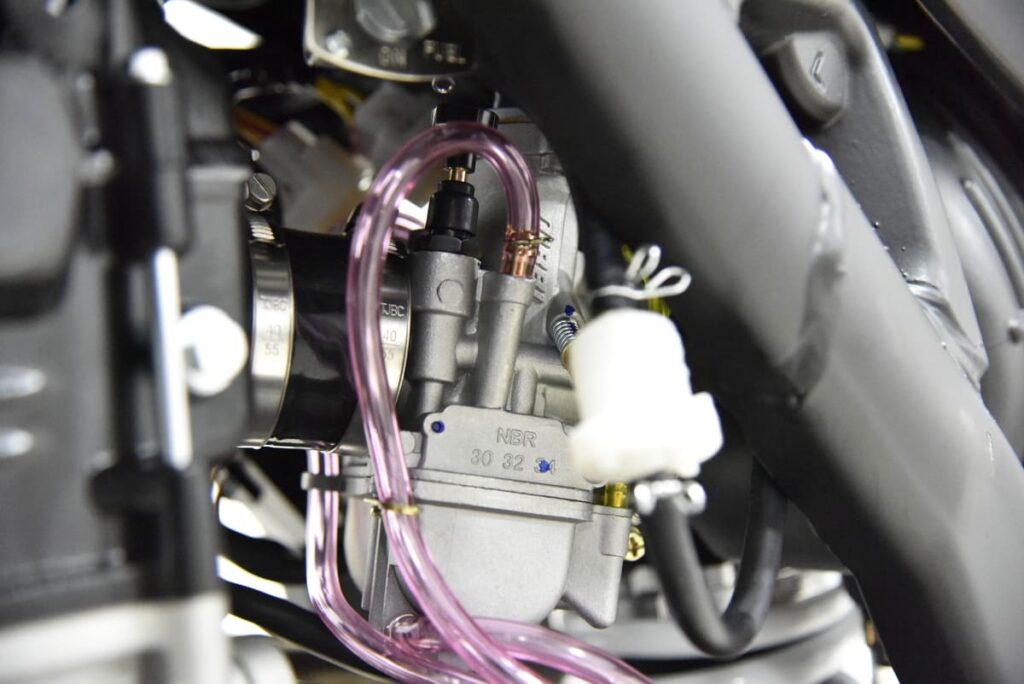
Material Used
The material used to construct the bike’s frame also affects its weight. Aluminium or carbon fiber frames are usually lighter and easier to handle. Steel frames, while heavier, offer more durability and stability.
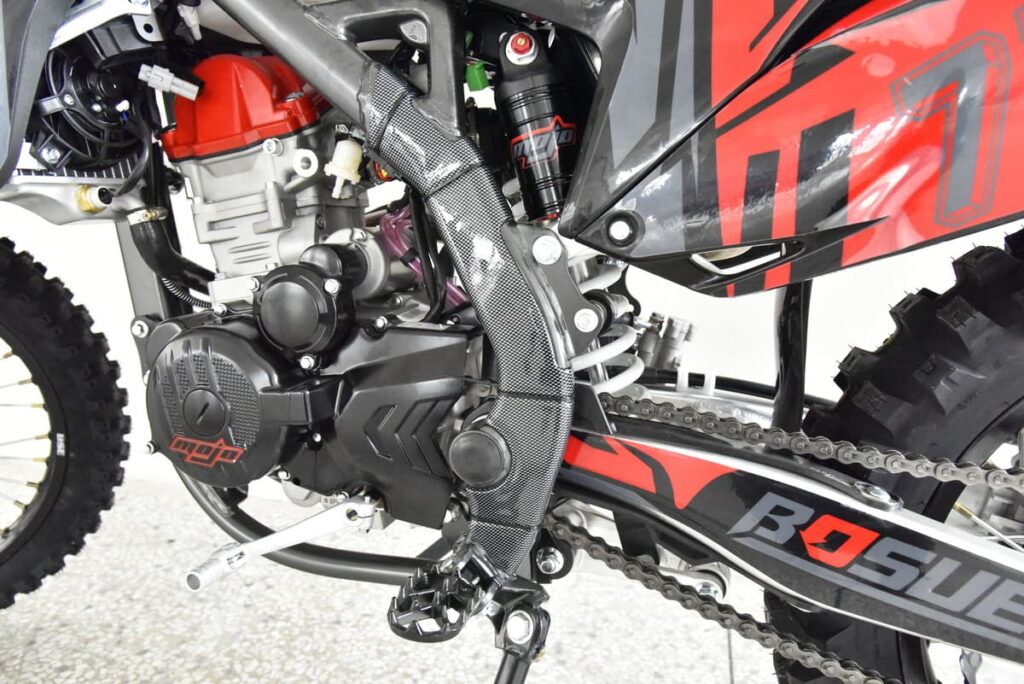
Fuel Capacity
Larger fuel tanks can add significantly more weight to the bike when filled than smaller tanks. However, one advantage of large tanks is that they provide longer riding time without the need for refueling.
Bike Type
Different types of dirt bikes have distinct weight ranges. A mini dirt bike weighs less than a large one, just like a kid’s bike weighs less than an adult’s. Youth dirt bikes (40cc to 125cc) can weigh as little as 90 pounds, while larger bikes (400cc upwards) may weigh over 250 pounds. The intended use of the bike—be it for racing, trail riding, or dual sports—affects its design and, consequently, its overall weight.
Average Weights of Dirt Bikes
Now, to the million-dollar question: how much do dirt bikes weigh? When comparing the average weights of dirt bikes, there is no one-size-fits-all answer. Different bike categories and models have different weights. So, here’s a comparison of different dirt bike types and their average weight.
Kids vs. Adult Dirt Bikes
Kids’ dirt bikes are generally lighter than adult models to accommodate the smaller stature and lower strength of kids. On average, kids’ dirt bikes weigh between 90 to 150 pounds, depending on the size and engine displacement. In contrast, adult dirt bikes typically range from 200 to 300 pounds.
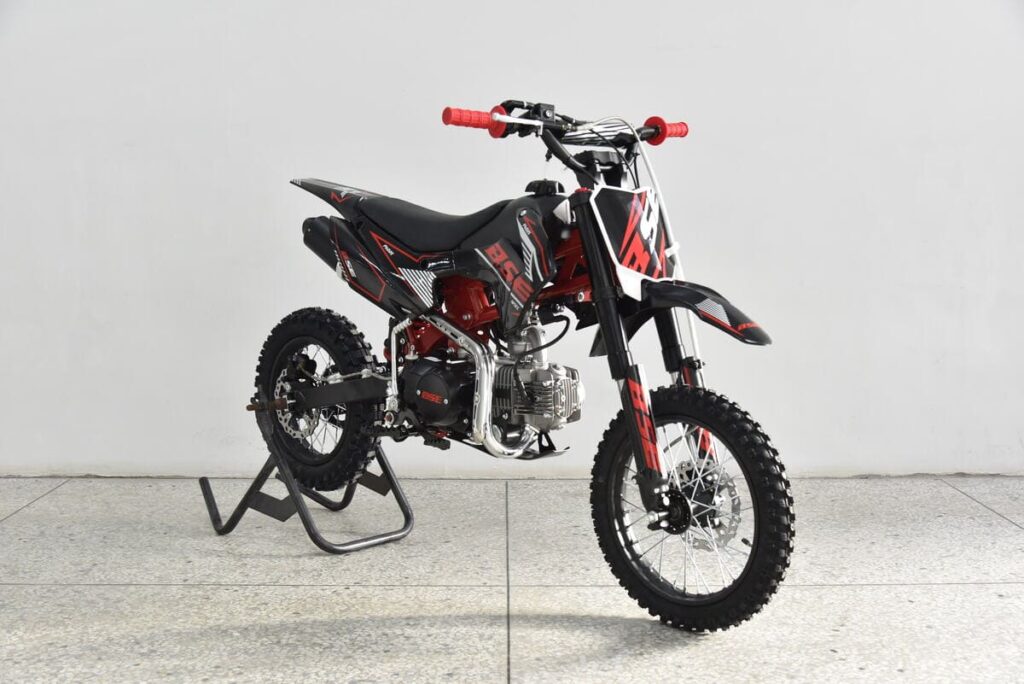
Electric Dirt Bikes vs. Gas-Powered Bikes
Electric dirt bikes typically weigh less than gas-powered bikes because they have fewer components. On average, electric bikes can weigh less than 200 pounds, while gas bikes can weigh up to 300 pounds.
125cc vs. 250cc vs. 450cc
Larger engine sizes typically result in heavier bikes. With 125cc engines being smaller than the rest, bikes with this engine type are lighter. In contrast, 250cc and 450cc dirt bikes offer more power but tend to be heavier.
Impact of Dirt Bike Weight on Performance
Here are some of the ways that a dirt bike’s weight can affect its performance:
Handling
Lighter bikes are easier to control and maneuver quickly, especially in difficult riding conditions. They allow you to go through tight corners, make quick turns, and maintain better balance.
Heavier bikes on the other hand can be more difficult to handle, especially on uneven terrain.
Rider’s Comfort
Lighter bikes typically require less physical effort to maneuver, which significantly reduces fatigue and strain. Additionally, they may have better suspension, which allows them to absorb impacts more effectively. On the other hand, heavier bikes can be more taxing on the rider, especially when the road conditions are harsh.
Speed
Heavier bikes may start slowly, but they usually pick up momentum after some time. However, lighter bikes have better power-to-weight ratios, which allows them to accelerate more quickly and gain higher speeds with less effort.
Stability
While lighter bikes are easier to control, heavier bikes offer greater stability. The extra mass reduces the risk of losing control and dampens the impacts from bumps and jumps.
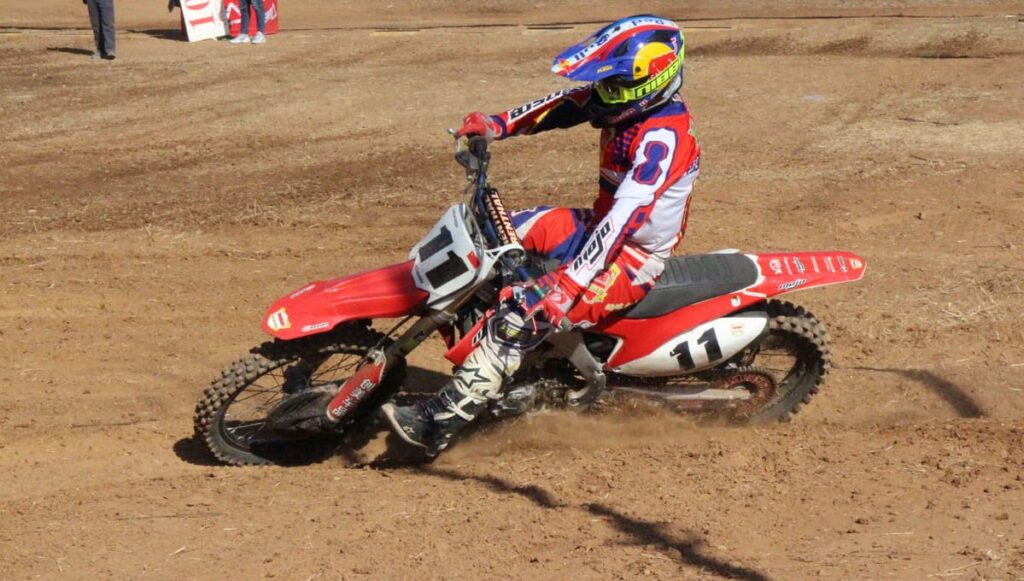
Fuel Usage
Heavier bikes usually consume fuel at higher rates than lighter bikes. This is because the latter have lower mechanical resistance, which allows riders to cover more ground on less fuel.
Modifying the Weight of Your Dirt Bike
As a bike rider who understands the importance of lower weight, it’s only natural for you to look for ways to lower the weight of your bike. So, here are some of the best ways to save weight on a dirt bike:
Reduce the Fuel You’re Carrying
Carrying excess fuel just adds unnecessary weight to your dirt bike. So before each ride, gauge the riding distance to determine how much fuel you will need. This way, you can carry only the fuel needed to complete the ride.
Tips on Selecting the Right Dirt Bike Based On Weight
One of the most important choices you will make as a rider is selecting the best dirt bike for yourself. When it comes to choosing the right weight, here are some tips that can help:
Skill Level
It is important to consider your current skill level when choosing the right bike weight. If you’re a beginner, you may find lighter bikes easier to handle. They will also help you to build confidence and improve your riding skills gradually.
However, if you’re an experienced rider, you may prefer slightly heavier bikes that offer better stability and control at higher speeds or in rough terrain.
Carrying Capacity
A dirt bike’s carrying capacity typically maxes out at around 320 lbs. When selecting a dirt bike, the engine size is a key factor. Bikes ranging from 250 to 450cc are suitable for riders weighing more than 250 lbs, while a 250cc dirt bike is ideal for those weighing between 150 and 250 lbs.
Experienced riders who are heavier may benefit from opting for more powerful bikes with engines over 450cc. It’s also common for heavier riders to need modifications to the bike’s suspension to better support their weight. Ultimately, how much weight a bike can handle depends on its overall build and power. Always check the manufacturer’s specifications to ensure you choose the right bike for your needs.
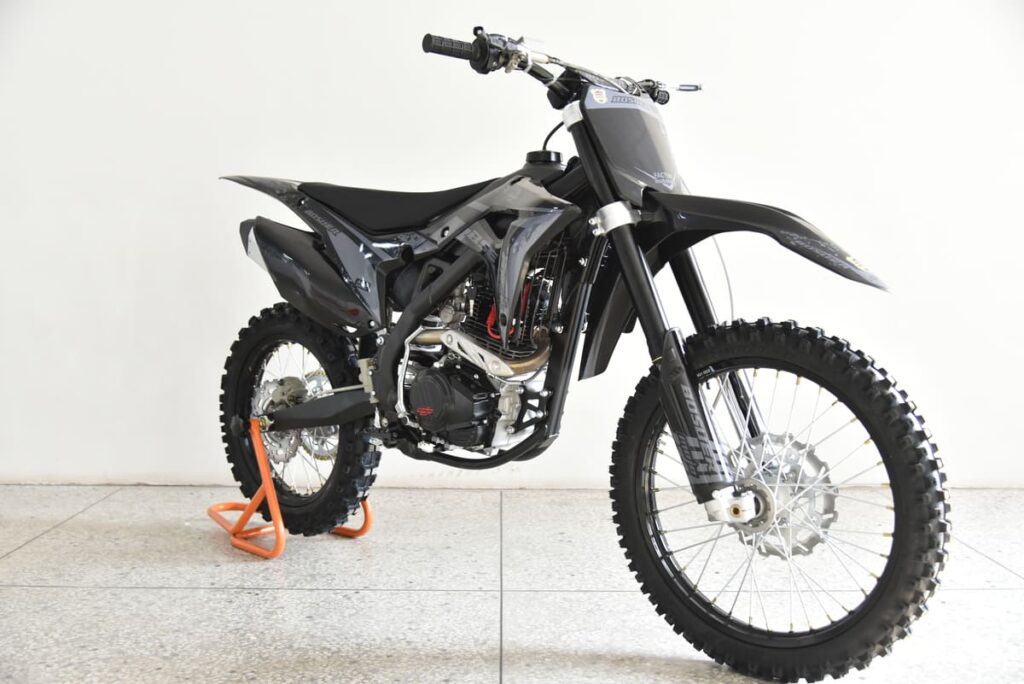
Intended Use
Are you planning to ride for recreational purposes or to participate in racing competitions? Lightweight bikes may help you go faster in high-speed races, but heavier bikes help you maintain stability and control when adventuring on your own.
Terrain Conditions
Lastly, you must consider what types of terrain your dirt bike is suitable for because the weight of the dirt bike can affect its traction on different surfaces. Lighter bikes are often preferred for tight trails with frequent corners and obstacles. Heavier bikes, on the other hand, may provide better stability on rough terrain, such as sand, mud, or rocky surfaces.

Conclusion
The weight of a dirt bike is a major factor that influences its performance, handling, and speed. Different dirt bikes weigh differently, based on their engine size, frame material, fluid capacity, and other factors. It is important for riders to understand these factors, so they can make informed decisions when selecting a bike..
FAQs
What Is the Average Weight of a Dirt Bike and Why Does It Vary?
The average weight of kids’ dirt bikes falls between 100 to 200 pounds and adult dirt bikes falls between 250 to 300 pounds. These weights vary from one manufacturer to another, mostly due to the engine size and dirt bike frames material.
What Factors Contribute to the Weight of a Dirt Bike?
The factors that contribute to the weight of a dirt bike include the engine size and type, frame material, fuel capacity, fluids, bike parts, and any additional components that come with the bike.
How Does Dirt Bike Weight Affect the Rider’s Performance?
Dirt bike weight directly affects the rider’s performance by affecting handling, maneuverability, speed, stability, and fatigue. The right weight guarantees top performance and comfort for riders regardless of skill level.
How Can I Make My Dirt Bike Lighter?
To make your dirt bike lighter, you can replace heavy components, such as wheels and exhausts with lightweight alternatives. You can also reduce the amount of fuel you carry to only the necessary amount.
Does a Lighter Dirt Bike Always Mean Better Performance?
While a lighter dirt bike often enhances speed and maneuverability, it doesn’t always guarantee better performance. Performance depends on various factors, including the rider’s skill, terrain conditions, and the state of the bike.
